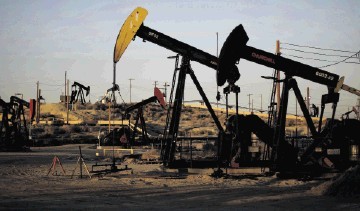
As shale gas exploitation proliferates, new research into the contents of the fluids involved in the process raises concerns about several ingredients.
Compounds known to be toxic have been identified in the frequently complex cocktails pumped down wells under high pressure to fracture shales in order to release hydrocarbons within.
It was disclosed at the 248th National Meeting & Exposition of the American Chemical Society (ACS) that, out of some 190 commonly used compounds, there’s very little known about the potential health risks of about one-third, and eight are poisonous to mammals.
Dr William Stringfellow, an ecological engineer at the Lawrence Berkeley National Laboratory and University of the Pacific, reported that he had conducted the review of fracking contents to help resolve the public debate over the controversial drilling practice.
In total, 54 of the compounds are organic; of these 27 are considered readily biodegradable.
o 21 chemicals have high theoretical oxygen demands and are used in concentrations that present potential treatment challenges.
o Most of the HF chemicals evaluated were non-toxic or of low toxicity.
o Four were classified as Category 2 oral toxins and one as a Category 1 inhalation toxin according to standards in the Globally Harmonised System of Classification and Labelling of Chemicals; however, toxicity information was not located for 34 of the HF chemicals evaluated.
“The industrial side was saying, ‘We’re just using food additives, basically making ice cream here,'” Stringfellow said. “On the other side, there’s talk about the injection of thousands of toxic chemicals. As scientists, we looked at the debate and asked, ‘What’s the real story?'”
To find out, Stringfellow’s team at Lawrence Berkeley National Laboratory and University of the Pacific have scoured databases and reports to compile a list of substances used.
They include gelling agents to thicken the fluids, biocides to keep microbes from growing, sand to prop open induced formation fractures and compounds to prevent pipe corrosion.
What their analysis revealed was “a little truth to both sides’ stories” – with big caveats.
Fracking fluids do contain many nontoxic and food-grade materials, as the industry claims. But if something is edible or biodegradable, it doesn’t automatically mean it can be easily disposed of, Stringfellow warned.
“You can’t take a truckload of ice cream and dump it down the storm drain,” he says, building on the industry’s analogy,” he reported to the congress. “Even ice cream manufacturers have to treat dairy wastes, which are natural and biodegradable.
“They must break them down rather than releasing them directly into the environment.”
His team found that most fracking compounds will require treatment before being released.
And, although not in the thousands as critics suggest, Stringfellow’s team identified eight substances, including biocides, that raised red flags as they were particularly toxic to mammals.
“There are a number of chemicals, like corrosion inhibitors and biocides in particular, that are being used in reasonably high concentrations that potentially could have adverse effects,” said Stringfellow. “Biocides, for example, are designed to kill bacteria – it’s not a benign material.”
The team is also looking at the environmental impact of the fluids, and is finding that some are toxic to aquatic life.
In addition, for about one-third of the 190 or so compounds the scientists identified as ingredients in various fracking formulas, Stringfellow said they found little information about toxicity or physical/chemical properties.
“It should be a priority to try to close that data gap,” Stringfellow says.